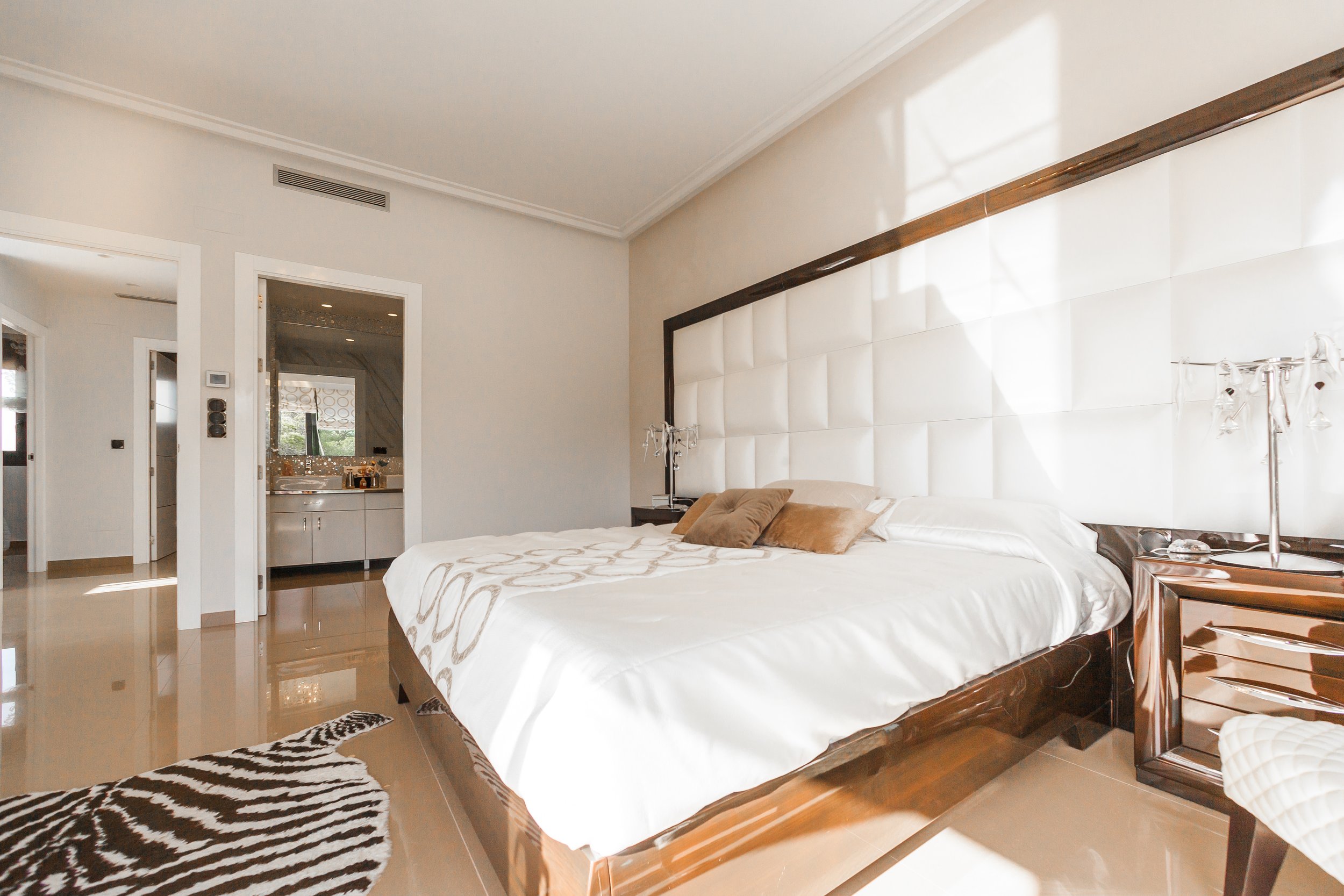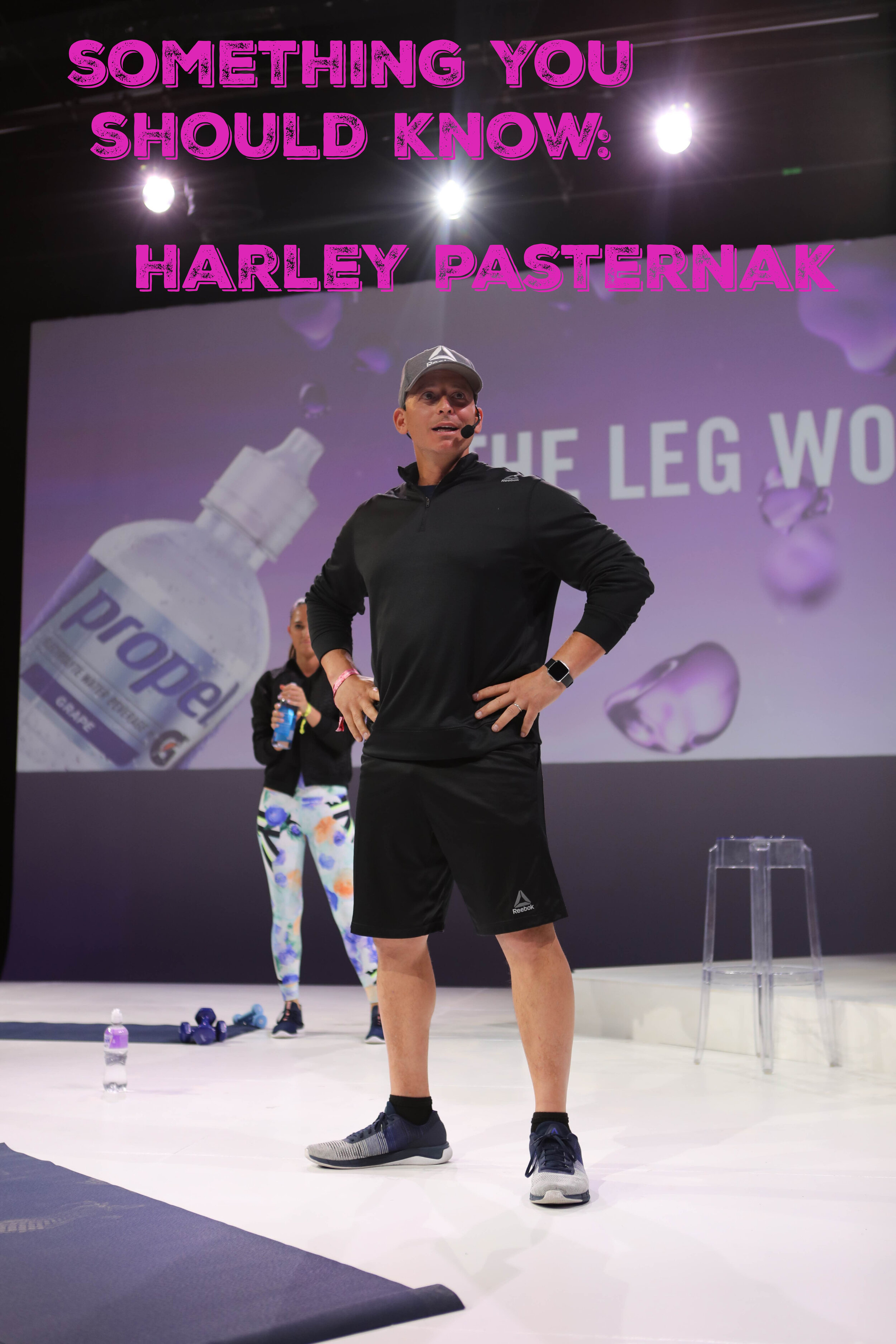We've been working within 2019 for a few weeks now, and whatever our goals are, it's still early enough to make a few tweaks on a number of our activities. We got the chance to catch up with Terry Cralle, RN, Clinical Sleep Educator to talk about sleep. We all know that this is an important activity, but we really wanted to find out what we could do to get more sleep as well as additional elements of this important health cycle!
She broke down the importance of our initial steps in getting great sleep, how we can optimize our bedroom for better sleep, whether we should go comando or not (and the benefits either way), how we should take eight and the ease of great sleep.
A New Year is upon us and for many of us, when it comes to our New Year’s resolutions, it’s “here we go again.” Will the gym membership go unused by mid-January or will the dieting trail off, as it usually does, as the days tick by? Whether it’s weight loss, new fitness goals, completing that degree, a new job or better financial decisions, there’s a lot that can and should be accomplished in the new year – but the question is: How do you get motivated and see resolutions through to completion? What would help ensure success with these goals – no matter the time of year? Is there a “secret sauce” that can help people achieve their new year goals – not to mention career and life goals?
The First Step is Sleep
The answer is a resounding “yes!” There definitely is something that can help us see our resolutions through, achieve successes and realize our full potential. It’s called sufficient sleep. Yes, it’s often disregarded or overlooked – but it shouldn’t be – as it is an incredible performance enhancer and game changer, especially for those who have not used it to their full advantage.
Sufficient sleep, often overlooked as an indulgence, rather than a biological necessity, can easily become the catalyst for seeing any goals through to success. Adequate sleep can provide what our bodies need, directly affecting our ability to succeed at what we set out to do.
There are many ways to optimize sleep. Here are easy things you can do now that can impact the way you view sleep and the way you get sleep.
Start by Optimizing Your Bedroom for Better Sleep
The bedroom is for sleep. Period. It is no secret that the bedroom environment can have an enormous impact on sleep quality and quantity. Are stacks of bills piling up on the dresser or is there unfolded laundry waiting to be put away? Has your bedroom become a storage room for unused exercise equipment or stacks of magazines? Has your mattress seen better days? How about the clutter spilling out from under your bed?
You may be pleasantly surprised by how a few tweaks will help transform your bedroom into a relaxing, serene, inviting and sleep conducive sleep sanctuary. See for yourself whether transforming your bedroom leads to better sleep quality. Consider the following for better sleep and better wake quality:
Do your bright red or purple bedroom walls make a statement? Bold colors may be affecting your sense of serenity and relaxation at bedtime. Consider borrowing a color palette from nature (think soft sky blues, pale forest greens and even the silver from moonlight) or light neutrals to soften things up a bit.
How does your bedding look and feel? White bedding is often associated with luxury and cleanliness. If the thought of crisp, clean white sheets makes you want to crawl into bed an hour earlier, even better.
A plant or two will not only look pretty, but can help improve bedroom air quality. According to NASA research, some plants act as natural indoor air purifiers, including the snake, English ivy, and spider plants. (Note that some plants can be toxic to children and pets.)
Clutter, junk, and piles of stuff create visual chaos — which is distracting and stressful, not to mention dust-collecting – all of which can negatively impact your ability to relax and fall asleep. Go minimalist by taking out extra stuff – even furniture. An organized, neat and sparse bedroom is more relaxing and conducive to sleep than one that is cluttered, disorganized and overwhelming.
Bright overhead lights should be avoided in the evenings and before bedtime. Have soft lighting options available in your bedroom and consider motion-detecting night lights to help safely navigate 3 a.m. trips to the bathroom.
Let’s face it: getting into a well-made bed feels wonderful at the end of a long day, and for many, an unmade bed is an eyesore. A survey conducted by the National Sleep Foundation (NSF) found that respondents who made their beds daily were 19 percent more likely to report quality sleep. However, there is some controversy about a made bed trapping in moisture and thereby worsening dust mites. If you like the look and feel of a made bed, consider pulling back the bedcovers as soon as you get out of bed in the morning to let your bed air out and then making it up at least an hour later. This may also be a good idea if you have pets who like to sleep on the bed during the day. If you opt not to make the bed, at least straightening the bedding can help give the bedroom a neater appearance.
PHOTO CREDIT | UnSplash
Give Some Thought to PJs – or Not
While this aspect of sleep is rarely given a second thought, let’s take a moment and consider how we feel during the day when we rock an outfit that looks great, feels comfortable and fits well – it really contributes to us having a good day as opposed to a not so good one. It goes the same with sleep. For optimal sleep performance, real pajamas that you only wear to bed are ideal. Don’t wear the same clothes that you work out in or go shopping in. Avoid tight or constrictive clothing that have uncomfortable straps, tags or anything that will bunch up or twist when changing position during sleep.
Changing into comfortable and designated sleepwear is a critical component of an effective sleep strategy. In fact, the term enclothed cognition is a term used to describe “the system atic influence that clothes have on the wearer's psychological processes.” Changing into designated jammies can give your brain the cue for “it’s time to go to sleep,” rather than “it must be time to hit the gym.”
There are many types of pajama fabrics available — silk, flannel, linen, cotton, even cashmere — so choose what feels best for you and your sleep style. (Do you sleep hot, cold, with lots of covers, without?) Surprisingly, wool can be ideal for a variety of sleepers. Published in 2016, research in the journal Nature and Science of Sleep found that wool did a good job at regulating body temperature — keeping the sleeper in what is known as “the thermal comfort zone.”
Sleeping in your birthday suit is another option. It is said that sleeping naked can help prevent overheating – result ting in deeper sleep. Buff sleeping is also reported to increase the storage of brown fat, the type of fat that burns calories. It is thought that increasing brown fat may help with weight loss, while improving insulin function and glucose levels. An added bonus is the fact that the skin-to-skin contact that naked sleep lends itself to creates a boost in the feel-good hormone oxytocin (often referred to as the love hormone), which contributes to increased feelings of intimacy and bonding. In fact, a British survey of over 1000 couples found those who slept in the buff reported happier relationships than those who slept in PJs. Alternatively, sleeping in as little as possible may be a happy and healthy compromise for those who don’t want to go totally commando.
PHOTO CREDIT | UnSplash
Take Eight
Statistically speaking, far too many of us fall into the category of not sleeping enough. According to the CDC, one third of the adults in the U.S. report that they usually get less than the recommended amount of sleep (7-9 hours a night). Insufficient sleep is a serious and costly problem associated with many health conditions — including heart disease, stroke, type 2 diabetes, heart disease, obesity, and depression. Insufficient sleep is also linked to motor vehicle crashes and workplace accidents.
Sleep fuels the body and brain in many ways – helping with learning, memory, problem solving and judgment. Sufficient sleep is particularly helpful for the developing brain. In fact, recently at Baylor University, students were given extra points if they met “The 8-hour Challenge.” The challenge entailed averaging eight hours of sleep for five nights during final exams week. The results from the challenge were published in an article in the journal Teaching of Psychology and demonstrated that the students who got the extra sleep performed better than those who did not participate. Researcher Michael Scullin noted that one of the students who got the extra sleep re marked that it was the “first time my brain worked while taking an exam.” Another student stated that "there’s plenty of time to set aside for sleep and still get everything done and you feel so much better doing it.”
The Baylor challenge reminded me of a group I worked with several years ago. They were Wall Street executives who prided themselves on sleeping as little as possible. (“I’ll sleep when I’m dead” was their favorite saying.) They laughed about all of the 3 a.m. emails they sent to each other and how often their work kept them up late, woke them up in the middle of the night or sometimes kept them up all night. Yet this group was convinced that they could not be successful if they took the time to get adequate sleep. In fact, they were under the erroneous impression that they had successfully acclimated to running on empty, and not only that, they were doing just fine. However, this attitude reflects the lack of insight that typically accompanies sleep deprivation – people think they are performing well, when in reality they are not. They don’t realize, see or feel the degradation in their performance and/or have lost their point of reference to feeling rested and restored upon awakening or even hitting the ground running.
I challenged this group to rethink sleep – to throw out all of their preconceived notions (sleep is a time-waster, sleep is for the lazy, I can’t take time for sleep if I want to climb the corporate ladder, etc.) and view sleep more as a performance enhancer than as a sign of weakness. I urged them to view sleep as a biological requirement – not an indulgence for those without a work ethic. I emphatically stressed to them that sleep and success were not mutually exclusive.
The only way to demonstrate this was to challenge them to extend their sleep time – shooting for eight – for a week at least, but ideally for two weeks - and see if they saw a difference in how they performed and how they felt, both physically and mentally.
I was not surprised to find them more than pleasantly surprised at the improvements in energy, productivity, general well-being, efficiency, accuracy, outlook, and communication when they were well-rested. As I had explained, we perform much like an intoxicated person when we are not getting the recommended amount of sleep on a consistent basis – not to mention, it’s terrible for our physical health. Unhealthy weight and a lack of exercise (no energy, no motivation) go hand in hand with insufficient sleep.
Sleep: Easy as One, Two, Three
Make 2019 a year to remember by ringing in the New Year with resolutions you can keep. Three easy steps are all you need to start the year off on the right foot – and keep it there. Three easy steps will help you see all of your resolutions through while keeping you healthy, energized, motivated, focused and happy. So go clean your bedroom, slip into (or out of) something cozy, and hit the hay at a decent hour for a change to grab eight hours of restorative sleep. That’s it. See for yourself the difference these few changes make. Then go tackle those resolutions. You may have the most productive year ever!
IG @CralleRN
Read more from the Feb Issue of Athleisure Mag and see Something You Should Know | New Year, New Sleep, New You in mag.













